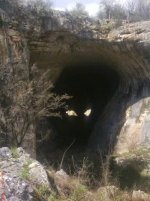It would be fascinating to know the spiritual beliefs of the Neolithic Irish. I guess we'll never know whether they had a concept of deity similar to what we have or whether their views were something quite different. They certainly seem to have been attuned to the landscape, choosing their ritual sites quite carefully. And obviously sites such as New Grange prove that the Sun cycle was important to them, but we can't know how they saw things.
You`re right Aberdeen, there is no way to know exactly what their spiritual outlook was, no-one really knows,not even the experts. We can make educated guesses, some of them may even come close to their actual system of beliefs, most are however probably way off mark. No matter how we try to see things as they might have, we still for all our effort see things from our modern perspective and try to interpret from there.
Definitely they had a knowledge of the suns progress throughout the year. Take for instance Carrowmore, it was in use before Newgrange, yet in one of the passage graves there [ I think its tomb G] there is a roofbox such as in Newgrange. So marking the sun at various points was something important. Some might interpret it as sun worship [ I don`t know many who say such]. It is likely more useful for marking out seasons etc. Of course there is no proof to say the sun may not have been revered. I think these early people likely revered much in nature, such as the earth and elements. They probably had a set of beliefs regarding such, not only one.
I suspect the earth would have been high on the list, as it gave life to crops and fed animals.
Whatever the belief system, the tombs are fantastic and the skill and labour involved, tremendous. I suspect there was some priestly class in charge and I also feel they likely travelled between the tombs here and those in Orkney and mainland Britain...recall the macehead found at Knowth, made from flint found only in Orkney.


